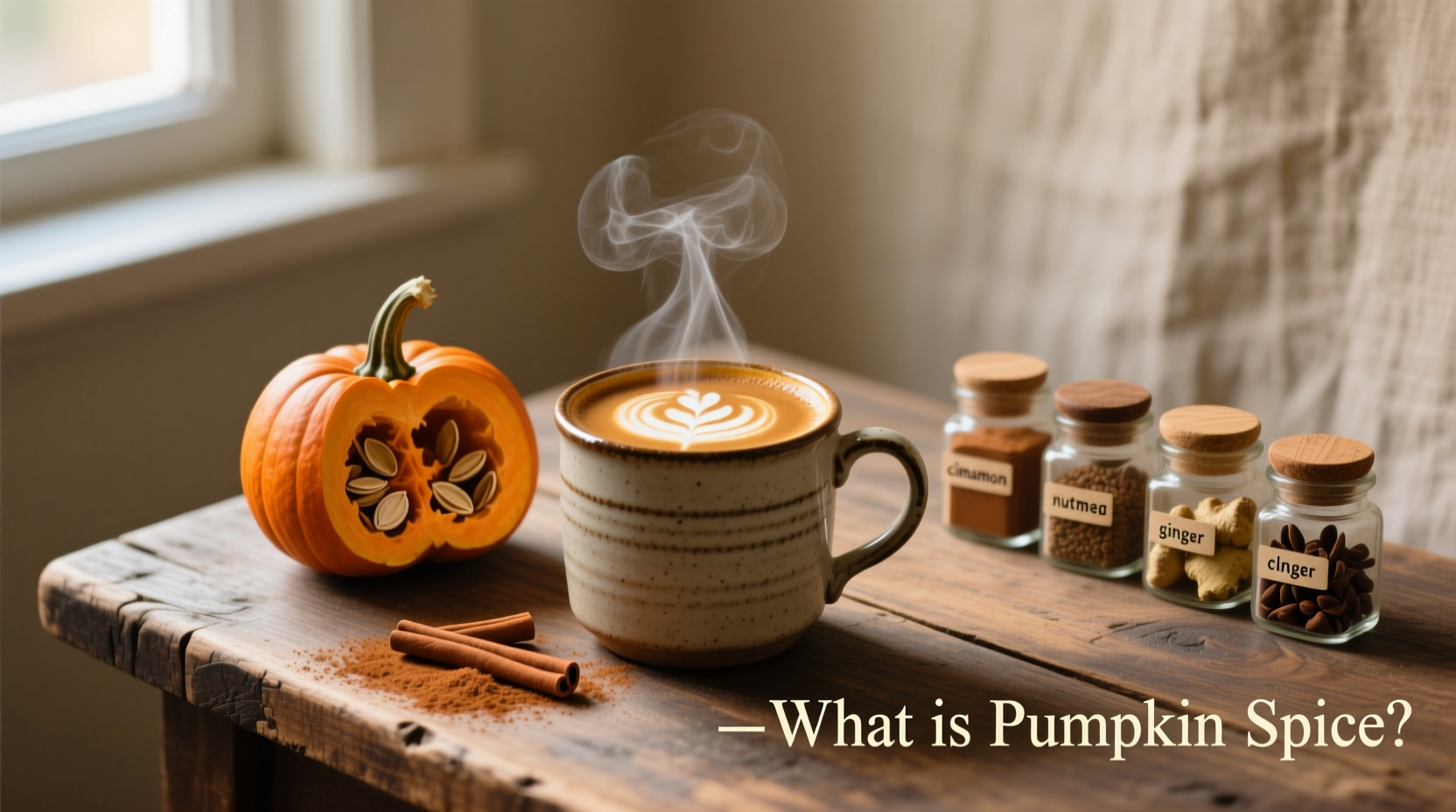Every fall, pumpkin spice flavors dominate coffee shops, grocery stores, and kitchen pantries across North America. But what exactly is this ubiquitous seasonal blend? Understanding its true composition helps you make better culinary choices and avoid common misconceptions about this beloved flavor profile.
Why the Misleading Name? The Pumpkin Spice Paradox
The term “pumpkin spice” creates understandable confusion. Despite the name, commercial pumpkin spice blends contain zero pumpkin. The name originates from historical usage—these spices were traditionally added to pumpkin pie recipes in early American cookbooks. The 1824 cookbook “The Frugal Housewife” by Susannah Carter first documented this specific spice combination for pumpkin dishes.
| Spice | Percentage in Blend | Flavor Profile | Historical Significance |
|---|---|---|---|
| Cinnamon | 50-60% | Warm, sweet, woody | Most abundant in historical recipes; valued for preservation properties |
| Ginger | 20-25% | Sharp, citrusy, slightly peppery | Used medicinally in early American households |
| Nutmeg | 10-15% | Earthy, nutty, slightly sweet | Expensive import; used sparingly in colonial cooking |
| Allspice | 5-10% | Complex blend of cinnamon, nutmeg, clove flavors | Native to Caribbean; became common in 19th century |
| Cloves | 3-5% | Intensely aromatic, slightly bitter | Most expensive spice; used minimally for preservation |
Evolution of a Seasonal Sensation: From Pie Spice to Cultural Phenomenon
The journey of pumpkin spice reflects changing American culinary traditions:
- 1700s-1800s: Regional spice combinations used in pumpkin pies varied by household, with no standardized blend
- 1895: McCormick & Company introduces the first commercially labeled "pumpkin pie spice"
- 1950s: Standardized ratios emerge as mass-produced spice blends become popular
- 2003: Starbucks launches the Pumpkin Spice Latte, transforming a baking ingredient into a beverage phenomenon
- 2010s-Present: Pumpkin spice expands beyond food into candles, cosmetics, and household products
Commercial vs. Homemade: Quality Differences You Should Know
Not all pumpkin spice blends deliver equal flavor quality. Commercial versions often contain:
- Anti-caking agents like silicon dioxide
- Lower-quality spice cuts with diminished flavor
- Imbalanced ratios favoring cheaper cinnamon
For superior flavor control, make your own blend using fresh, whole spices. The National Center for Home Food Preservation recommends this professional ratio:
"For optimal flavor, use 3 tablespoons ground cinnamon, 2 teaspoons ground ginger, 2 teaspoons ground nutmeg, 1½ teaspoons ground allspice, and 1½ teaspoons ground cloves. Store in an airtight container away from light for up to 6 months." — National Center for Home Food Preservation
Practical Applications: Beyond the Latte
While pumpkin spice lattes dominate fall marketing, this versatile blend shines in numerous applications:
When Pumpkin Spice Works Best
- Sweet applications: Baked goods, custards, and desserts
- Cream-based dishes: Ice cream, whipped cream, cheesecake
- Breakfast items: Oatmeal, yogurt, pancake syrup
Where Pumpkin Spice Falls Short
- Savory dishes: Overpowers delicate meat and vegetable flavors
- High-heat cooking: Spices lose volatile compounds above 350°F
- Delicate baked goods: Can overwhelm subtle flavors in shortbread or meringue

Maximizing Flavor: Pro Tips from the Kitchen
Professional chefs recommend these techniques to enhance pumpkin spice flavor:
- Toast whole spices before grinding to activate essential oils
- Add late in cooking to preserve volatile flavor compounds
- Pair with fat (butter, cream, oil) to help flavor compounds dissolve
- Balance with acid (citrus zest, apple cider vinegar) to prevent cloying sweetness
According to research published in the Journal of Food Science, toasting spices increases their antioxidant capacity by up to 30% while enhancing complex flavor development through the Maillard reaction.
Your Perfect Pumpkin Spice Blend Recipe
Make this superior version that outperforms store-bought options:
- 3 tbsp high-quality Ceylon cinnamon
- 2 tsp freshly grated ginger
- 1½ tsp freshly grated nutmeg
- 1 tsp freshly ground allspice berries
- ½ tsp freshly ground cloves
Combine in an airtight container. For best results, use within 3 months. This small-batch approach ensures maximum flavor intensity compared to commercial blends that may have been sitting on shelves for over a year.
Seasonal Sensibility: Enjoying Pumpkin Spice Year-Round
Despite its autumn association, pumpkin spice works beautifully in winter holiday baking and even spring desserts when used judiciously. The key is adjusting quantities based on ambient temperature—use 25% less in summer when flavors concentrate more readily in warmer conditions.











 浙公网安备
33010002000092号
浙公网安备
33010002000092号 浙B2-20120091-4
浙B2-20120091-4